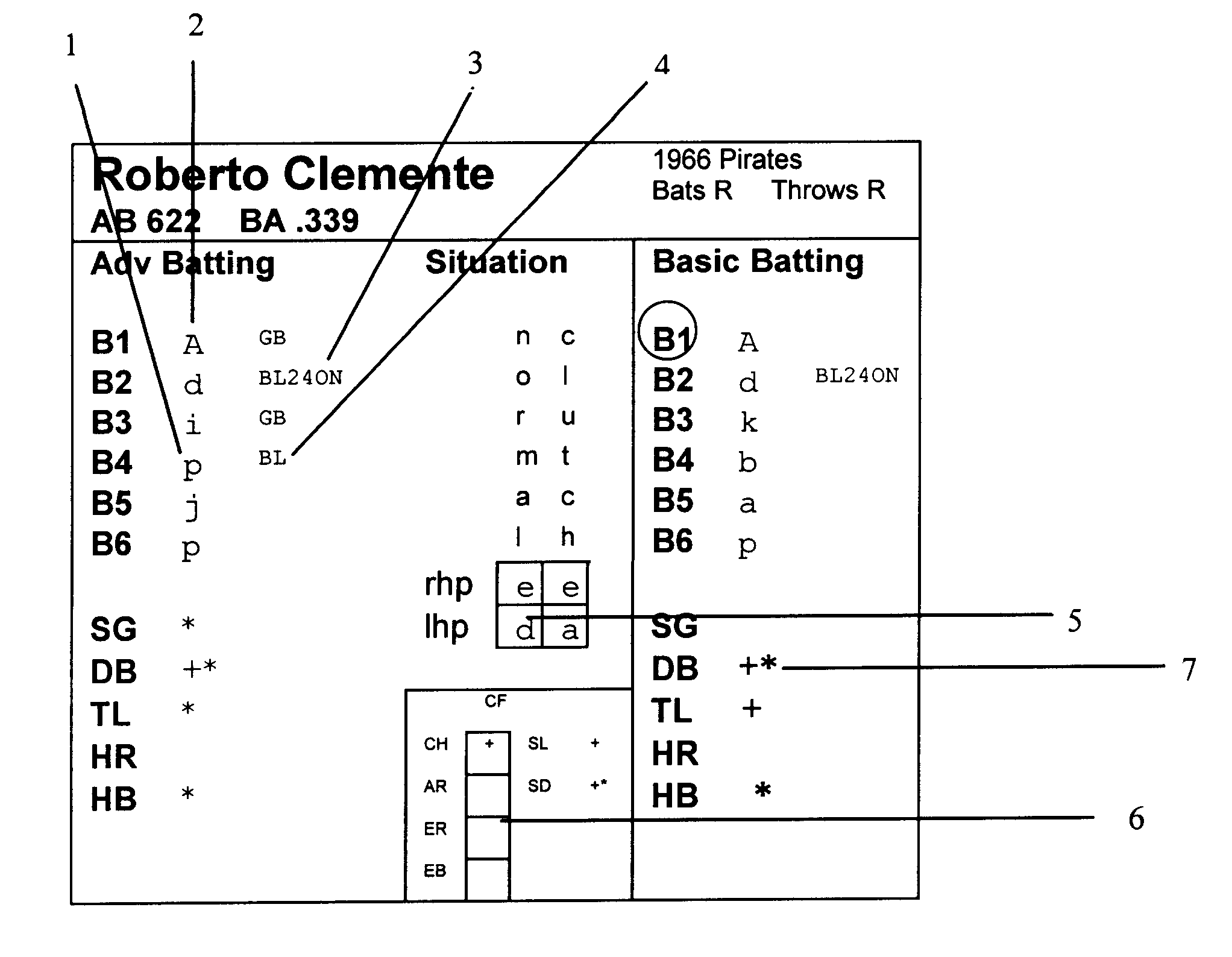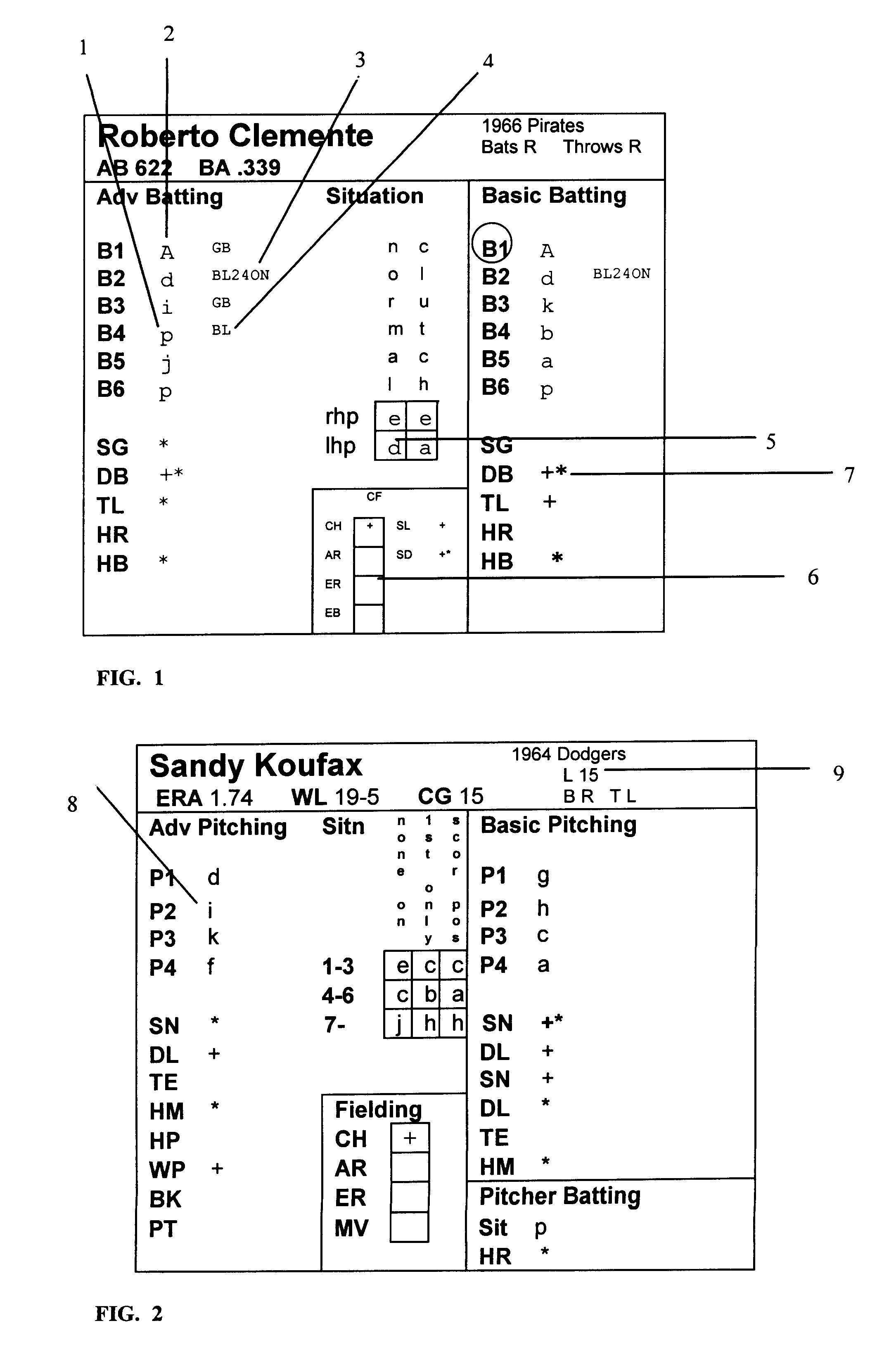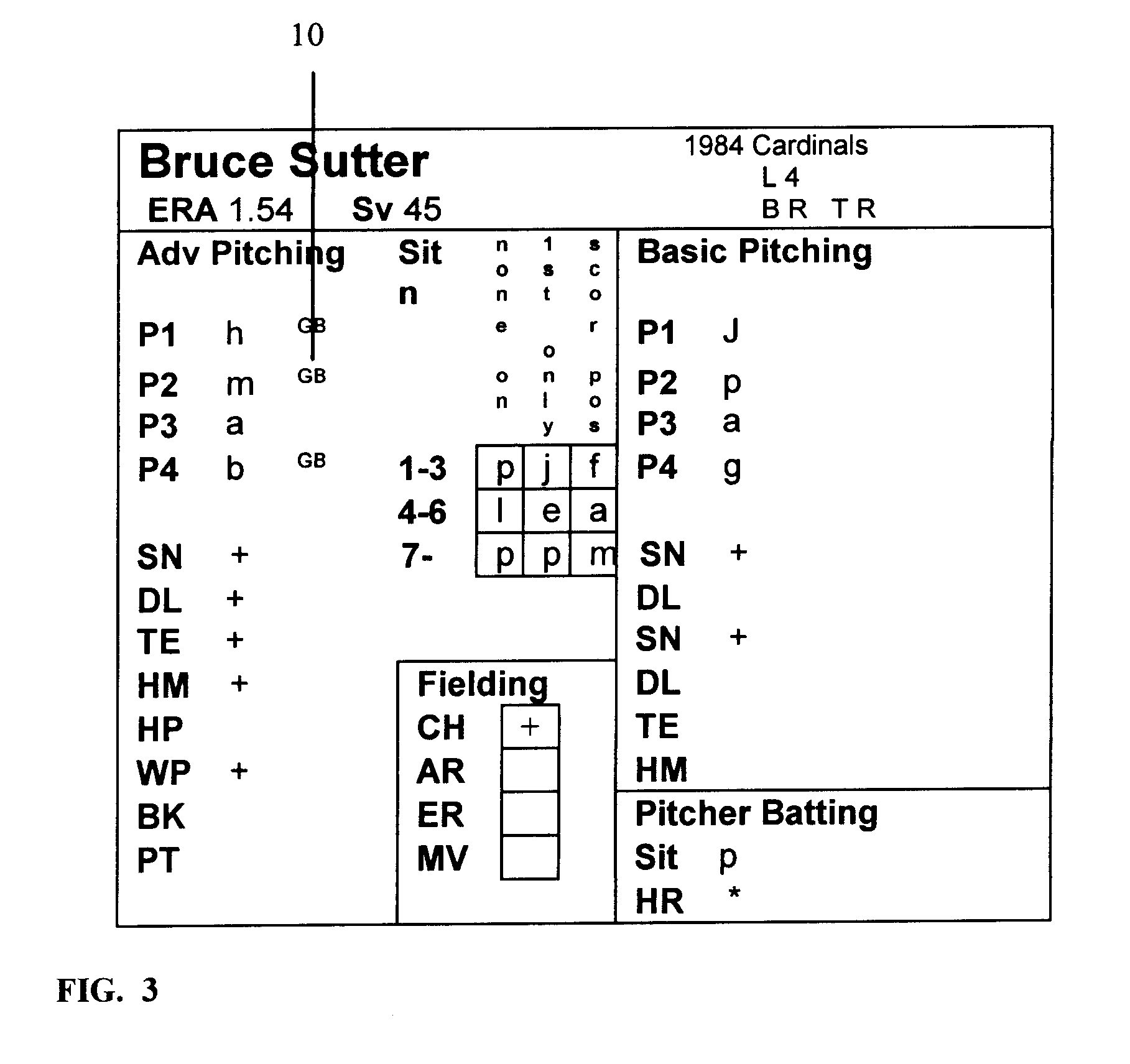Baseball game
a technology for baseball and game players, applied in the field of baseball board games, can solve the problems of space limitation, inability to reproduce the earned run average of pitchers, and certain limitations of concepts, and achieve the effect of reducing the complexity of the experience of the game player, high efficiency, and high efficiency of the basic game-playing procedur
- Summary
- Abstract
- Description
- Claims
- Application Information
AI Technical Summary
Benefits of technology
Problems solved by technology
Method used
Image
Examples
Embodiment Construction
The game consists of the following:
Batter cards. Each batter card represents the statistical performance of batter in batting and fielding.
Pitcher cards. Each pitcher card represents the statistical performance of a pitcher in pitching and fielding.
Fielding cards. Each fielding card represents the statistical performances in fielding for all players on a team.
Ballpark ratings chart. The ballpark rating chart represents the statistical tendencies for home runs to be hit in different ballparks.
114 result cards. Each result card provides a portion of the range of results that can occur in a baseball game.
Tables. Each table finely details a portion of a small subset of results that can occur in a baseball game.
Note: The Invent Play table, shown in FIG. 9 and described in the section "Invent Play" allows a game player use his own imagination to insert plays into the baseball game currently going on, which ensures that every possible play can occur in the game.
FIG. 1 illustrates a batter ...
PUM
 Login to View More
Login to View More Abstract
Description
Claims
Application Information
 Login to View More
Login to View More - R&D
- Intellectual Property
- Life Sciences
- Materials
- Tech Scout
- Unparalleled Data Quality
- Higher Quality Content
- 60% Fewer Hallucinations
Browse by: Latest US Patents, China's latest patents, Technical Efficacy Thesaurus, Application Domain, Technology Topic, Popular Technical Reports.
© 2025 PatSnap. All rights reserved.Legal|Privacy policy|Modern Slavery Act Transparency Statement|Sitemap|About US| Contact US: help@patsnap.com



